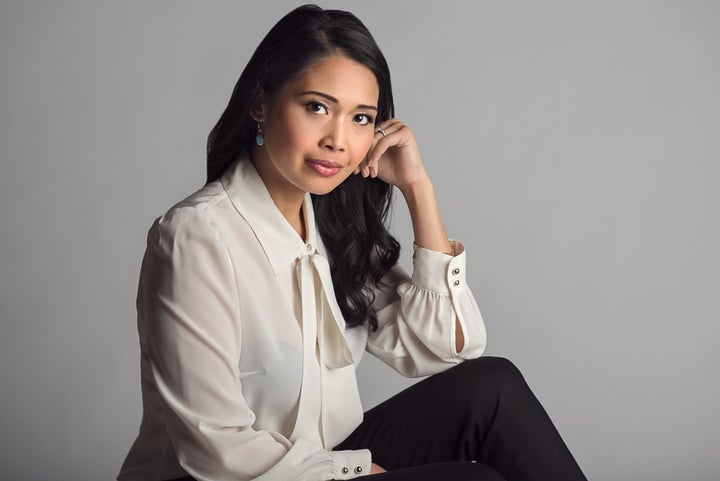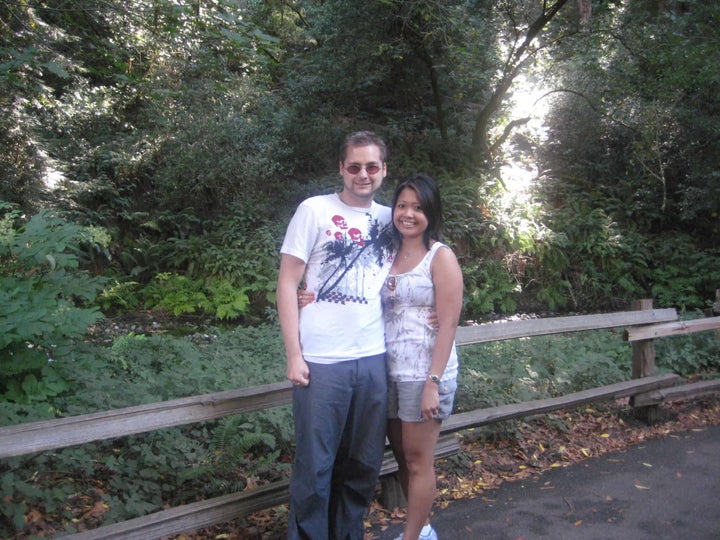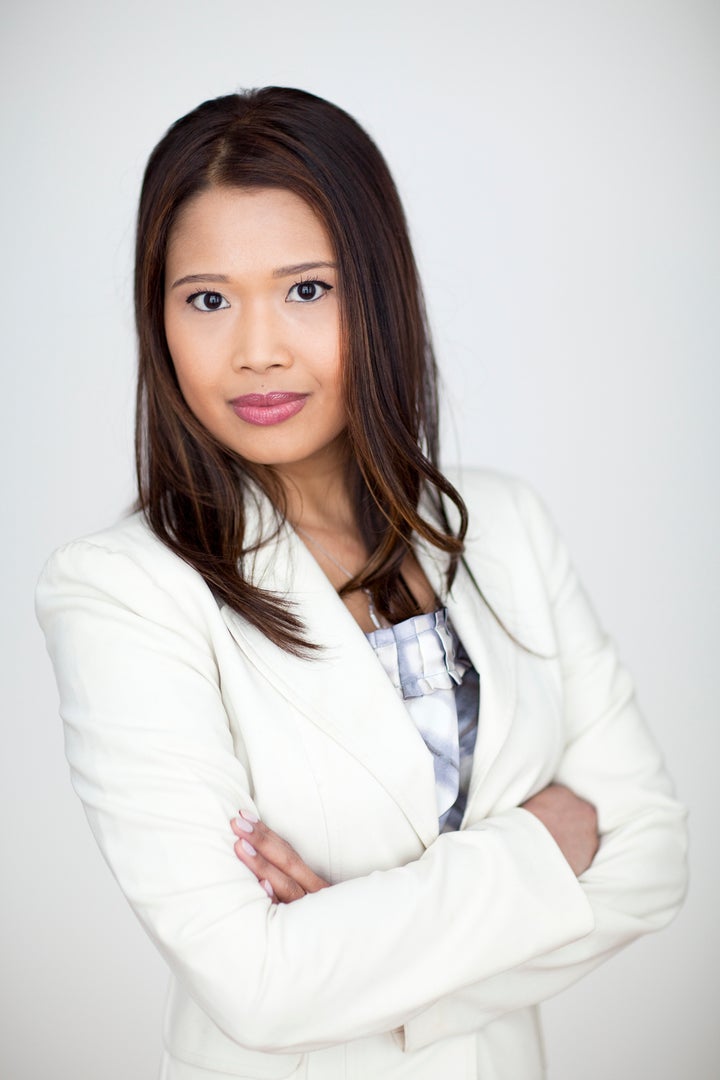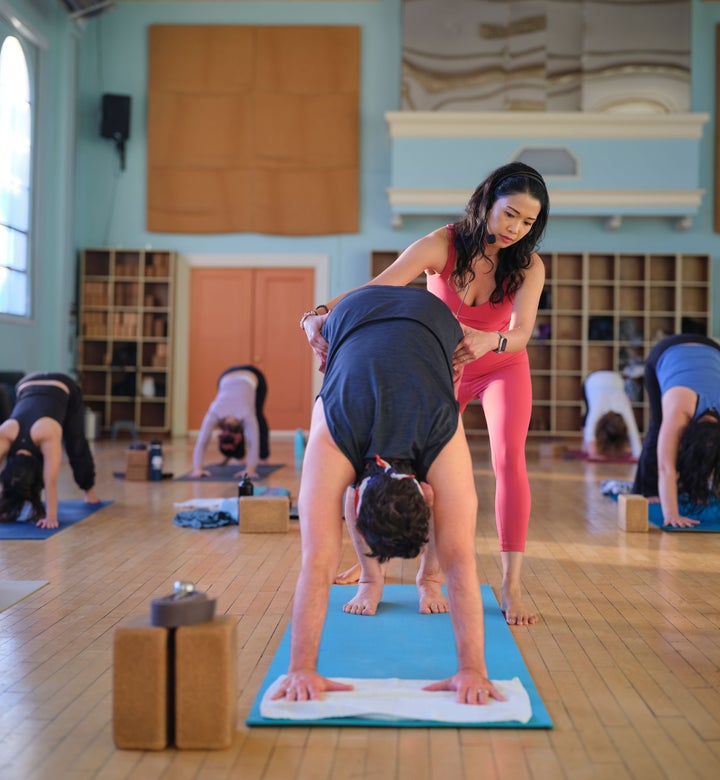
“You might never wear high heels again,” my podiatrist said after diagnosing me with Morton’s neuroma, a painful thickening of tissue on the balls of my feet that can be brought on by unideal footwear choices. It felt like a death sentence for 20-something-year-old me living in New York City, the fashion capital of the world, but it was the least of my problems. I was 15-20 pounds heavier than I wanted to be, chronically stressed to the point that my hair was falling out, and my only mindfulness practice at the time was social smoking and eating pommes frites to soak up the alcohol after an evening of bar-hopping.
Then a yoga instructor showed up in my office and I got hooked. Fifteen years later, yoga has not only helped heal my physical ailments and kept me sane during dire periods like the COVID pandemic, but it completely changed my life. It inspired me to quit my successful AdTech sales career, which I had spent almost 20 years creating. I knew leaving everything I’d built behind was a huge risk and there was a good chance it might ruin my life, but I also knew I had to make a leap.
Even though many strict Filipino parents like mine sway their kids to become doctors, nurses and lawyers, my folks trusted me to follow my career compass as long as I supported myself after college. I took this responsibility so seriously that I deferred my dream to become a journalist in order to cash the fat commission checks I received working in corporate sales.
I got so good at it that I became fully independent within my first year of graduating from college. In less than eight years of climbing the corporate ladder, I was not only able to take care of myself, but I did what some immigrant children do for their parents when they become successful: I helped pay off their loans.
One of my wildest fantasies had come true, and my family could not have been prouder of me. Still, even though we had manifested the American dream, I continued to dread disappointing them.

Shortly after I decided to leave the tech company I had been working for in order to follow my new dream, I visited my parents. We were in their dining room in the middle of the Mojave Desert, but it wasn’t the 105 degrees Fahrenheit weather outside that was making me sweat. As we finished eating, I quietly told them, “I left my job.”
My dad was speechless. My mom, a retired chemist, was concerned but eventually conceded, “You’ve been so mataray,” which is Tagalog for “rude, harsh and unkind.” “Maybe you will be happier.”
When I look back at old journal entries, I can see changes had already been taking shape two years before I jumped ship. “My love for money has kept me on this hamster wheel far too long,” I wrote to myself. “Corporate life has an expiration date.”
For 15 years, I battled anxiety, panic attacks and bouts of insomnia. My hormones got so out of whack that more than once, I had received an unmistakable warning from my body: a shower drain clogged with golf ball-sized chunks of my hair. I began to wear a lot of headbands and bobby pins to sweep a swatch of hair over a growing bald spot.
Before I decided to quit, I attempted to counterbalance my high-pressure life with countless hours of yoga and meditation. I spent thousands of dollars seeing Eastern medicine doctors and energy healers from both U.S. coasts. When I saw some encouraging results — the resprouting of baby hair, a physique I liked better and more stable moods — I became even more curious about the metaphysical world.
For the next year, I devoted my weekends studying “subtle energies” and Reiki, a Japanese tradition using hands-on healing techniques for relaxation and stress reduction. Eventually, all that so-called “woowoo work” gave me the clarity I was seeking: I could only treat the symptoms for so long. I finally needed to address the root cause of my agony, so I quit my corporate chapter.

A month before I told my parents what I’d done, I confessed to my husband, “I don’t want to have regrets when we’re 90 years old.” Still, I knew if I left the corporate world, my family’s financial stability could be threatened. I was frightened to make any decision that could cause harm or even change to our lives, but by the time we reached the final mile of our daily walk through the Eucalyptus groves outside our home, my role as our family’s breadwinner who earned $250,000-$350,000 a year evaporated.
Thankfully, my husband’s job as a software engineer with health benefits offered us a soft landing, but his single income in the San Francisco Bay Area doesn’t stretch far. We lived off some of my savings but soon, like a true yogini, I knew I had to renunciate my old lifestyle — and the spending habits that came with it — and almost overnight my identity was reconstructed.
I stopped impulse-buying designer clothes and shoes from flash sale apps that too often convinced me through thumbnail-sized images on my phone that paying $500 for a pair of sneakers was a good idea. Instead of getting $150 haircuts, I went to the modest salon where I took my daughter and talked my way into the stylist giving me the cheap “teen cut for 13 years or older.”
Our family also became frugal about vacations and my husband and I gave up our visits to high-end resorts and award-winning spas — an expensive habit we’d begun enjoying before we had kids (and had never stopped enjoying).
We also gave up all but a few dinners at fancy restaurants and ended the two-to-three-times-a-week delivery app meals we used to order without a second thought. Not only were we saving money, but I started cooking again, something I loved to do but had abandoned because I was always too busy.
Instead of buying random things I didn’t need, I invested my time and money in books, workshops and experiences that helped enrich and expand my mind. Since I was no longer indebted to a job that had me tethered to emails and calls at all hours of day and night (and sometimes even weekends and vacations), I enrolled in 200 hours of yoga teacher training. This was a fantasy I’d had for years but never seriously considered pursuing because there was simply no time. Suddenly it not only seemed possible, it was actually happening.

After all those years of practicing yoga religiously, I listened to the universe whisper, “It is time.” I vowed to live my life’s svadharma, or true purpose, and began my training. I went from wanting to close the biggest sales deals to realising my deepest desire: helping others find inner peace.
During my yoga teacher training I discovered the neuroscience of mindfulness and how it can not only help fight stress, chronic illness and addiction; it can actually change the physiology of our brains. I learned consistently practicing mindfulness appears to physically shrink the amygdala, the region in our mind that controls our fight-or-flight impulses, and the prefrontal cortex, which controls awareness and decision-making, becomes thicker. “The picture we have is that mindfulness practice increases one’s ability to recruit higher-order, prefrontal cortex regions in order to down-regulate lower-order brain activity,” said Adrienne Taren, a researcher studying mindfulness at the University of Pittsburgh, told Scientific American. Or, to put it more succinctly, Scientific American explains that when practicing mindfulness like meditation or yoga, “our more primal responses to stress seem to be superseded by more thoughtful ones.”
Now whenever I get stressed or anxious, I hack my brain, apply what I know about mindfulness and self-regulate. I do Transcendental Meditation or pranayama (breath work). I take a walk in nature to move the stagnant energy out of my body. I force myself to get back on the mat and do yoga even though sometimes I really don’t want to.
Now that my prefrontal cortex is (more) in charge, I try to make decisions based on my life’s true purpose, not fear. And even though I’m listening to my brain and thinking clearly, I have come to rely on my heart and my gut more to help guide me to do what’s right for me and my family.
Within one month of passing and receiving my yoga teacher certification, I got a job as an instructor at one of the oldest studios in San Francisco. One class per week turned into 10. My weekly schedule filled up with private lessons and public classes at additional studios. I spent most of my waking hours planning and studying the classes I was going to teach. Thanks to mindfulness exercises, my brain was getting good at remembering sequences, choreography, cues and human anatomy — a once foreign language that I’m now speaking fluently.

Recently, I was hired to teach office yoga at one of the biggest law firms in the country. I had come full circle: now I was the office yoga instructor teaching stressed-out corporate employees — just like I used to be — and when the elevator doors opened on the 29th floor of that building, my old world and my new world collided.
Just a few minutes into class, I felt like I was having an out-of-body experience as I witnessed my students shed layers of stress. Some instinctively closed their eyes, while others exhaled “ahhhhh.” One woman who looked like a younger version of me softened her shoulders at the end of class and flashed a huge smile. Who knows — maybe one day she’ll become a yoga teacher too. Or maybe she’ll be content to incorporate the practice into her life and it’ll offer some relief from the stress her job must cause her.
I’m not saying everyone needs to follow my path and quit their job to lead a life of yoga and meditation. That’s what worked for me, and I was lucky — even privileged — to have the means to be able to take a chance on my new life. But no matter who you are or what you do, I believe taking time to be mindful and asking ourselves what we truly want is crucial to our well-being. Once we become aware of what we love or lack in our lives, we can make a plan to focus more of our attention on it. From there, anything is possible.
I never thought I’d be living the life I’m living today. This was all just a daydream from 30-something-year-old me. I was afraid to leave behind what I knew and I was scared that my family and I wouldn’t be OK without my giant paychecks or the material possessions they allowed us to rack up. I’ve learned there’s nothing wrong with being afraid, but at some point, you have to decide what you’re going to do with your fear. I let it guide me to this new life and now that I’m here, I realize how much happier I am, how much better I can show up for my family and my community, and how much healthier my relationships and personal well-being are — and that’s worth more than any salary.
Alyssa Lauren Stone is a Bay Area-based writer, certified reiki master, yoga teacher, and ex-Silicon Valley / NYC tech sales executive. Her work has appeared in Newsweek, Business Insider, and Hearst Digital Media’s Shondaland. She is currently working on a memoir about her spiritual quest and personal transformation. You can follow her journey on Instagram @alyssalaurenstone or Twitter @alyssalauren.